Synthetic the Most Exotic Fruits From Around the World You’ve Probably Never Heard Of
There is an absolutely massive number of exotic fruits in the world you may have never seen before! Which fruits are they? The following list of the exotic fruits in the world you’ve probably never heard of is going to be quite the adventure for you!
No matter where in the world you come from, chances are high that you have had your exotic fruits throughout your life, but there is an absolutely massive number of exotic fruits out there than you may have never seen before. Even if you do recognize a few of them, some of these guys you can only get on certain continents, or cost a crazy amount of money and are only available from specialty stores in trendy US cities.
Some of these strange fruits taste amazing, while others are… well, they are an acquired taste.
1. Durian
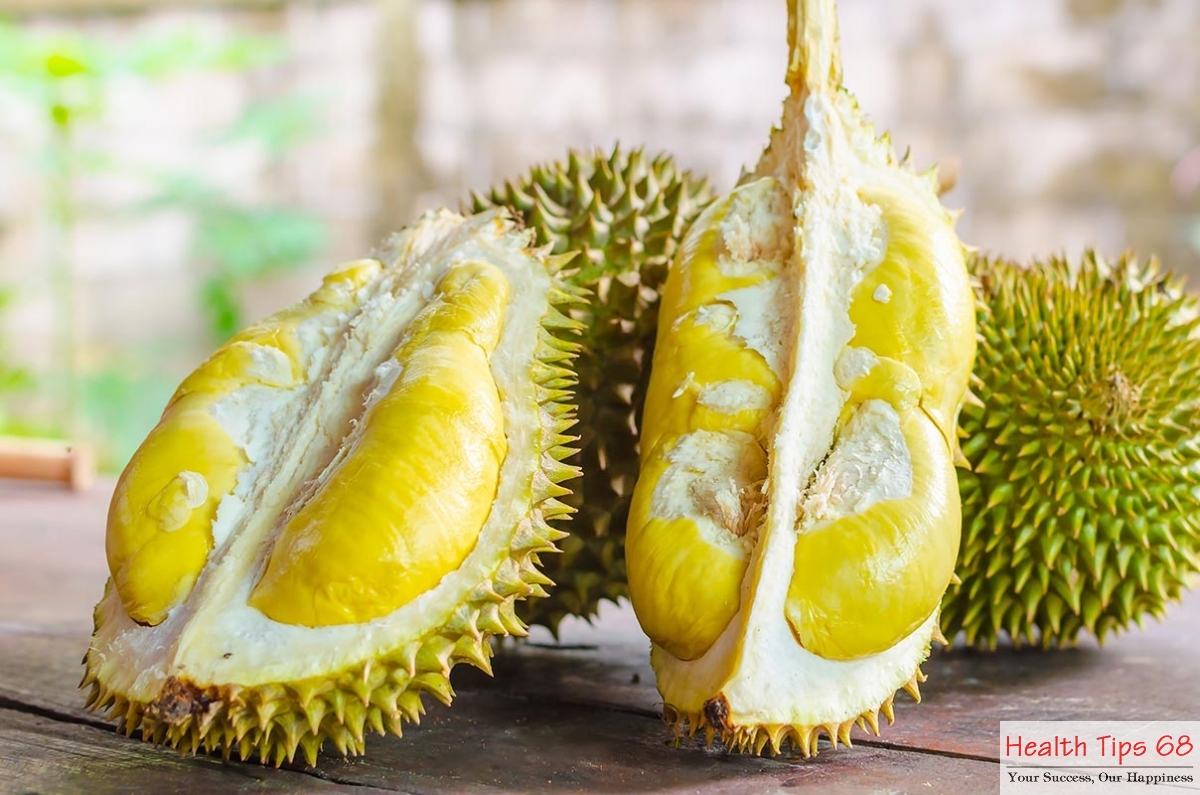
Durian one of those foods that people either love or hate. With a spiky exterior that makes it less than ideal for playing sports with, the durian holds a fruit in its interior that is known for strong reactions (both good and bad) from the odor it emits. The odor is so strong that it often penetrates its husk even when intact, resulting in its banishment in Southeast Asia from
Descriptions of the taste vary considerably, but one example is that the fruit tastes like ‘rotten mushy onions’. Despite this, there are many people who are fanatical about the fruit and even competitive eating contests that focus on its consumption.
2. Fuyu Persimmon

The Fuyu persimmon is a non-astringent variety that benefits from a trifecta of qualities; it lacks a core, seeds, and tannins. Fuyu persimmons have a squat and rounded shape and are capped with an indented leaf. Fuyu persimmons boast an orange pumpkin color on both its skin and flesh. When ripe, Fuyu persimmons possess layers of flavor, reminiscent of pear, dates and brown sugar with nuances of cinnamon.
Their texture varies from crisp and succulent when young, to a tender and gelatinous texture as they mature. Fruits are ready for harvest when skins are deep orange, and unlike most other persimmon types, have no astringency and are ready to eat when still firm
3. Pacay (Ice Cream Bean)

Pacay is a medium to large sized tree up to 18 m (59 ft) tall. Indumentum of pubescent hairs with rusty color on young branchlets, leaf rhachis and inflorescences. Leaves have 3-5 pairs of oblong-elliptic leaflets, with a terminal leaflet of ca. 10–20 cm long. Inflorescences in spikes to 3 cm long. Pods, flat, 20 cm long or more.
The fruits of the trees are quite edible and are often consumed by people of regions where this fruit grows. In Central America, the seeds are cooked and eaten as a vegetable. In Mexico, the seeds are roasted and sold outside theaters to moviegoers. In Costa Rica, the fruit is also known as Guaba, and is associated with good luck
4. Lucuma

Lucuma, pronounced loo-koo-ma, is an exotic Peruvian fruit that looks a little like a nashi pear crossed with a mango. It has a delicious creamy citrus flavour with a hint of maple and a dash of sweet potato (NZ kumara). It’s sometimes called the “eggfruit” in English, due to the texture of the fruit’s flesh, which is quite dry like a hard-boiled egg yolk.
Lucuma is known by the local people of Peru as the “Gold of the Incas”, and has been cherished for centuries, both as a staple food source, and a religious offering associated with fertility. Today, the fruit still plays a big part in contemporary Peruvian celebrations, and is the most popular flavour of ice cream in the country! The fruit is so well loved by the locals, there are even 26 villages named after it.
5. Chayote
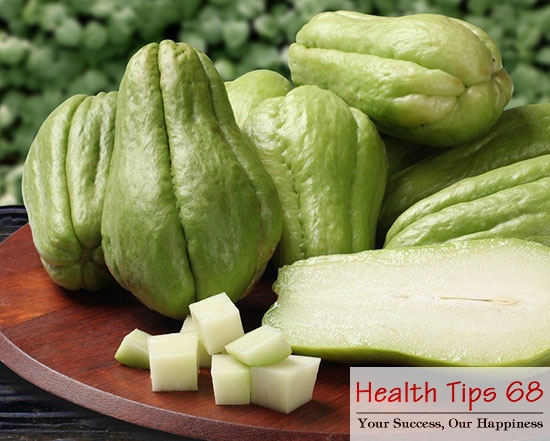
Chayote belongs to the same family as squash, melons and cucumbers and the plant is native to Mexico, where it grows abundantly. The fruit can be eaten raw and is sometimes used in salsas or salads, although most of the time it is marinated in either lime or lemon juice first.
Most of the time however, the fruit is lightly cooked, which helps to keep the texture of the fruit. The skin does not need to be removed prior to cooking.
6. Starfruit
s
Starfruit is a type of tropical fruit that is rapidly becoming popular in the United States. The shape of the fruit means that when it is sliced, the section form five-pointed stars (although in some cases fruits may have a slightly different shape).
The flesh of the fruit is crunchy and juicy, and the taste can vary considerably across the fruit. Ripe fruit can be eaten raw (in their entirety), while unripe fruit are sometimes used in cooking.
7. Pomelo

As appearances suggest, pomelo is a citrus fruit and it originally comes from Southeast Asia. When ripe, the fruit is yellow or pale green and tends to have white flesh and thick rind.
The taste is like a sweet grapefruit and it lacks the bitterness normally associated with grapefruit. However, the fruit does still have the potential to interact with some medications in the same way that grapefruit does.
8. Kiwano, AKA African cucumber/horned melon

I recently stumbled upon kiwano fruit, also known as kiwano melon, or horned melon. Well, this odd looking fruit goes by many names, and its unusual, spiky appearance immediately caught my attention when I first saw it in a tropical fruit shop I had never been to before.
Even from the outside, the kiwano looks a little odd, and from the inside the fruit is even more confusing. The flesh itself actually tastes a combination of kiwifruit, zucchini and cucumber, which is an odd combination that also seems to be quite appealing.
Eating the fruit is simple, you simply cut it in half and squeeze the green ooze out, or you can eat it with a spoon. The pulp is also good as a garnish, in fruit salads or in drinks.
9. Jackfruit

This is a tropical fruit that is most commonly produced in Vietnam and Thailand, with a flavor that resembles a mix of other fruits, including banana, mango and pineapple.
Sometimes the flavor is also described as similar to Juicy Fruit gum. The fruit is also high in vitamin B, potassium and protein, making it a particularly healthy but severely underutilized crop.
10. Atemoya

Atemoya is a mix of sugar apple and cherimoya. It is a rare member of the anonna family.
Atemoyas are round or heart-shaped, averaging from 8 to 12 inches long; some can weigh up to 5 pounds. Their skin is a pale bluish-green or pea-green, and turns more yellow as it gets riper.
The flesh is juicy and smooth. The flavor is very sweet vanilla.
This fruit is very rare in availability at this moment. There is a small season in which only a dozen fruits ripen at a time on the tree. If you preorder this fruit, you are placing your name on a first come-first serve list which means you will have first dibs for our next harvest. This could potentially take months depending on the time that you order.
11. Jabuticaba

Jabuticaba is an unusual case of a fruit that grows directly on the trunk of the tree. The fruits can be eaten straight off the tree and grow to around 1.5 inches in diameter.
Often the fruit is used in a similar manner to grapes, which is why some parts of the world also have jabuticaba wines and liqueurs.
12. Gac AKA Baby Jackfruit

From the outside, gac does kind of look like a baby jackfruit, but visual appearance is where the similarity ends. The fruit has a very short harvest season, making it a relatively rare food.
Because of this, it is often used for festive or ceremonial occasions, rather than as an ingredient. One common dish from the fruit involves cooking the flesh and the seeds in rice, resulting in a bright orange rice dish.
Dietary supplements from the fruit have also been produced as it offers a high amount of phytonutrients.
13. Cempedak
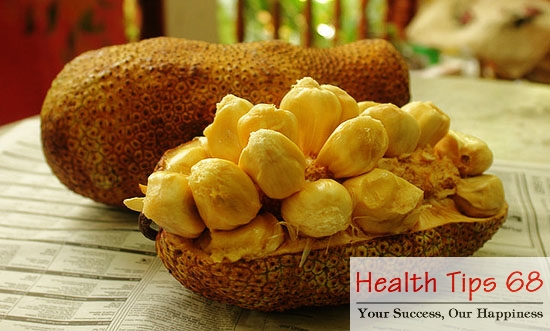
The cempedak is a close relative of the jackfruit, and interior structure of the two fruits is similar. The individual pulpy pieces can be eaten straight out of the fruit as-is, and the flesh is a less sweet version of the jackfruit.
The fruit also has a very strong smell and you can smell it from quite some distance away. Opening a cempedak needs to be done with care, as doing so releases a sticky juice that you need to use an oil-based product to remove.
14. Calamansi Lime

Calamansi limes are best described as a mix between a lime and an orange. This gives them a strong citrus fragrance and they also tend to have much more juice than limes typically do.
Despite this, they still have that sour tartness of limes and they can be used in the same way as a lime. The limes are often green and tend to be relatively small, however, you can also find them with orange skin, which causes no end of confusing for the unwary shopper.
15. Lychee
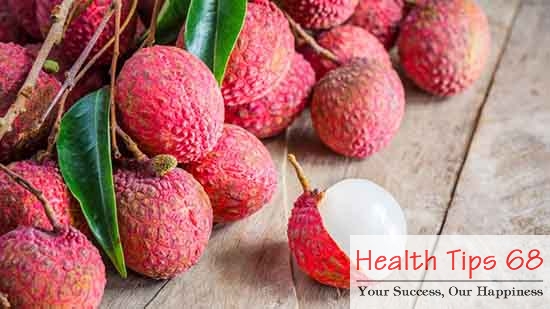
The lychee is a sweet summer fruit that comes from the soapberry family. The outer rind of the fruit is inedible, but it is easily removed to allow access to the white flesh inside.
The fruit is known for its floral scent, although this scent is lost when the fruit is canned, making the fresh fruit a more popular option. Lychees are also common across a number of different desserts.
16. Langsat

Langsats are orb-shaped fruits that look a little bit like a small potato when the skin is on, although the inside of the fruit is an entirely different matter. When ripe, the fruit is sweet and tastes a little bit like a grapefruit.
The simplest way to eat the fruit is to peel off the skin and eat it out of your hands, although the fruit can also be cooked. Two main varieties of langsat exist. One of these is thick skinned and the other is thin skinned, although both taste good.
17. Mangosteen
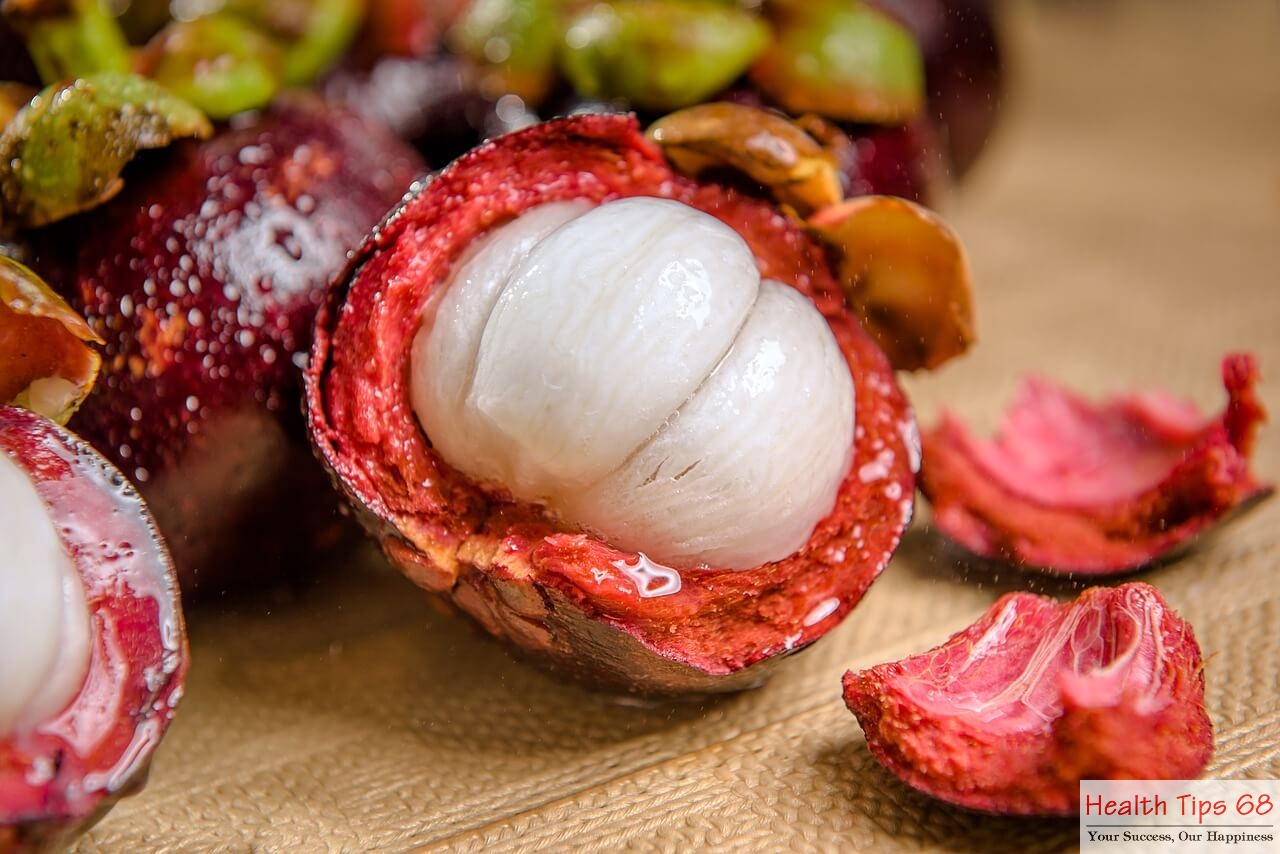
The mangosteen has an interesting history. Despite the fruit’s popularity, it was illegal to import them into the United States for a long time, because there were fears that the fruit contained the Asian fruit fly.
They are now available and the best place to source them tends to be Asian specialty food stores. At the same time, there has been a growing interest in the juice from the fruit, which has been associated with a number of health benefits.
18. Loquat

The loquat resembles an apricot, and like an apricot, the yellow flesh of the fruit is the part that is eaten.
Unusually, loquat trees flower in autumn or the beginning of winter and fruits ripen in winter itself or at the start of spring. The fruit is best if picked when the fruit is entirely yellow, but before it starts to go orange, as the yellow stage is where the flavor is the most intense.
The fruit does also have a very thin skin, which can be removed. However, removing the skin can be challenging and messy, so most people simply don’t bother and use it as-is.
19. Pitaya AKA Dragon Fruit

There has been a lot of popularity surrounding dragon fruit drinks and dragon fruit flavorings in recent years, but the fruit itself tends to get overlooked.
The white flesh of the fruit along with its black seeds are the part that you eat, as the skin itself cannot be eaten. The seeds have a nutty taste while the flesh of the fruit is sweet. Altogether, the flesh and the seeds go well together and can be easily scooped out of the skin and eaten.
20. Monstera Deliciosa

Monstera deliciosa is another tropical fruit, although this one looks a lot more like an ear of corn than it looks like a fruit. The green scaly exterior of the fruit is tough and inedible, and it is the white flesh beneath this that people eat.
That flesh has a similar texture and taste to pineapple, although there are also some similarities to the jackfruit in terms of taste. The fruit should only ever be eaten when it is completely ripe, as the unripe fruit can irritate and cause adverse reactions.
21. Poha berry, Physalis, Cape goseberry
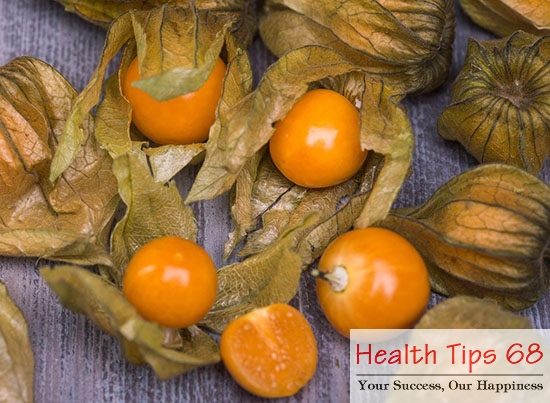
The yellow-orange fruit of the cape gooseberry grows inside of thin papery husks that are incredibly easy to remove. The fruit grows to roughly the size and shape of a cherry tomato, although the color and interior of the fruit is very different.
The taste is best described as an appealing cross between tomato and pineapple, and they are commonly eaten dipped in chocolate.
22. Noni Fruit

The noni fruit is a native of Australia, Asia and the Polynesian islands. The fruit is roughly the size of a mango and is normally eaten for its potential health benefits, rather than its taste.
Many different health claims have been made about the fruit, although little has been proven. Nevertheless, the high antioxidant content of the fruit suggests that it may offer some benefits. The juice from the fruit is bitter, so people tend to use it as part of a fruit juice or smoothie, so the taste can be masked.
24. Yangmei
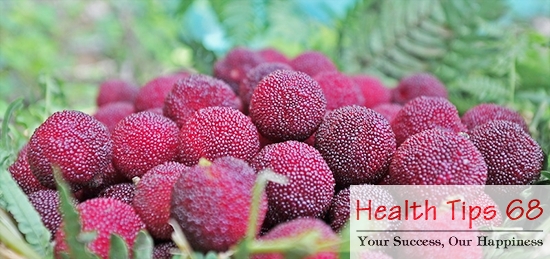
The yangmei fruit is extremely common in China and is frequently eaten raw and used in creating alcoholic drinks. However, it is much less common outside of China, because the fruit is very perishable, making it challenging to transport.
The fruit is small, slightly larger than a cherry, and has a similar taste and texture to a strawberry. Even where the fruit is common it can often be expensive, as it has to be chilled from when it is harvested onwards.
25. Ugli Fruit

The ugli fruit is a citrus fruit, created from the hybridization of tangerine, orange and grapefruit, and the fruit hails from Jamaica. Unusually, the name ugli itself is actually trademarked, but it is a suitable name, as it has a more misshapen and less appealing appearance than most traditional citrus fruits.
26. Custard Apple
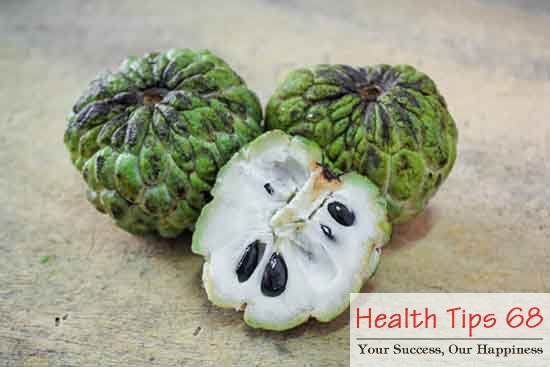
The custard apple seems to get its name from the flesh of the fruit, which has a mild and sweet taste that resembles traditional custard. There are several varieties of custard apple, with the most common being African
Pride and Pink Mammoth, with the latter being a considerably bigger fruit. Although they are relatively uncommon, custard apples can be found in the United States, and are a sweet treat for those lucky enough to find them.
27. Sapodilla

The sapodilla is known for its unusual taste combination, which is said to be a mixture of root beer and brown sugar. Because of this, the fruit is commonly eaten as a sweet treat. The texture of the fruit most closely resembles a pear, although botanically it is considered to be a berry.
28. Santol
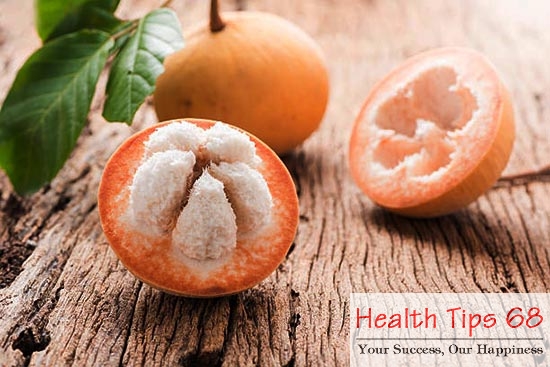
The santol is an unusual fruit that has a very thick skin, with white segments of flesh inside. The fruit itself is a mixture of sweet and sour, which can be appealing to some and not to others.
The most common way to eat the fruit is to suck the flesh from the seeds, as the pulp from the fruit sticks strongly to the seeds. You do need to be careful not to swallow the seeds in the process.
29. Salak

Salaks might be rare in the United States, but they are particularly common in Indonesia. The fruit is roughly the size of a strawberry and has a complex taste that includes honey, citrus and pineapple.
The texture of the fruit is spongy, which is a bit unusual for people who aren’t used to it. Despite this, it is a fruit that people quickly come to love and it is easy to eat straight out of its rind.
30. Rose Apples
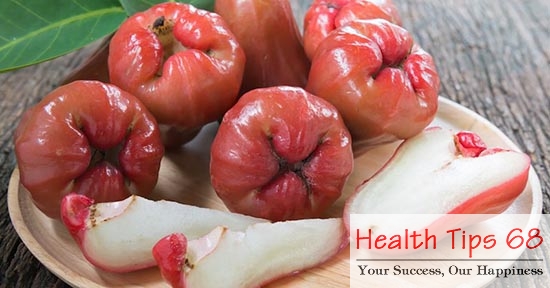
The rose apple doesn’t look like a normal apple in the slightest, and its shape and size is more similar to a small pear. When ripe the skin is also much waxier than is normal for apples.
Despite this, rose apples do tend to taste like normal apples and can be eaten in the same way. However, the seeds of the apple are inedible, so these need to be avoided or spat out when eating the fruit.
31. Rollinia Deliciosa AKA Birbia

Like many other members of the custard-apple family, birbia doesn’t look all that much like a fruit from the outside. The outside of the fruit is yellow as it ripens, but the spines taste on a black appearance when handled, which can make the fruit look very unappealing.
However, the interior of the fruit is a different story, and tastes a little bit like a lemon meringue pie. The fruit does have an incredibly short shelf-life, which makes it very hard to find.
32. Rambutan

You wouldn’t know from looking at it, but the fruit of the rambutan is actually a sweet and white oval. The fruit can be easily opened either by cutting into the rind or by making an incision with biting, as the spines themselves do not hurt and are harmless.
From there, the outer rind of the fruit can be peeled off to reveal the soft flesh. Doing this can also release some juice, which is as sweet as the fruit itself.
33. Kaffir Lime

Also called the makrut lime, this type of lime has a bumpy outer skin. Most of the time, it is the zest of the fruit that is used in a large range of traditional dishes and the juice of the fruit is considered too acidic for food.
There has also been considerable controversy surrounding the name kaffir lime, as the word kaffir is considered a racial slur in many parts of the world.
34. Pulasan
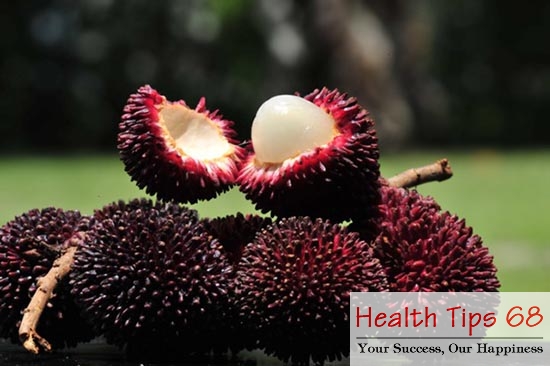
Visually, pulasan looks a lot like rambutan, and the two tropical fruits are often confused with one another.
One difference between the two species is that the seed of the pulasan can be safely eaten raw, and it has a similar taste to almonds. The plant is native to Malaysia, and the fruits are rarely found outside of Southeast Asia.
35. Nipah Seeds

Nipah seeds come from the nipah palm. This is a particularly versatile species of plant and most parts of the plants are used for different purposes, such as the sap being tapped or the young shoots of the pam being eaten. The fruit is also sometimes used as an ingredient in desserts.
36. Water Apple
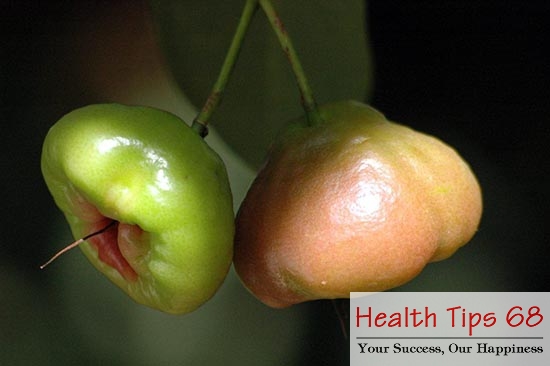
The water apple is a tropical fruit and despite its name, the fruit isn’t actually considered to be an apple. The fruit itself is relatively small and tends to be less than an inch in length.
It has a relatively mild or faint flavor, which resembles an apple, however, the texture of the inside is more similar to a watermelon.
37. Breadfruit

An interesting thing about the breadfruit is that it can be eaten in multiple different stages of development.
When the fruit is mature, it can be eaten raw and has a sweet and creamy taste, making it a good option for desserts. It also makes a good substitute for most starchy vegetables, like potatoes, and mature breadfruit can actually replace potatoes in many recipes.
38. Wood Apple, Bael, Stone Apple
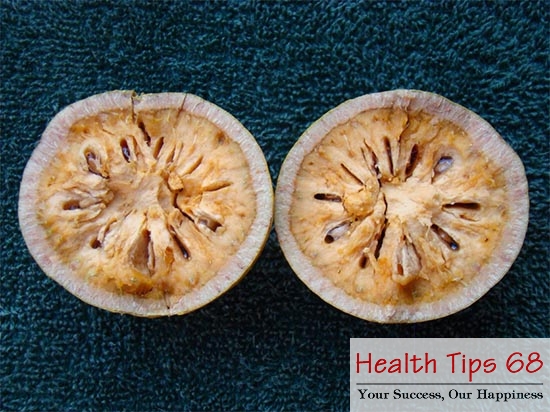
The wood apple seems to get its name from the very hard rind of the fruit. This rind makes it challenging to get the fruit open and the rind is also often used as an ashtray or a bowl.
The flesh of the fruit can be eaten as-is and is often scooped directly out of the rind. It can also be used in a range of other ways, such as scooped out and frozen.
39. Longan
ll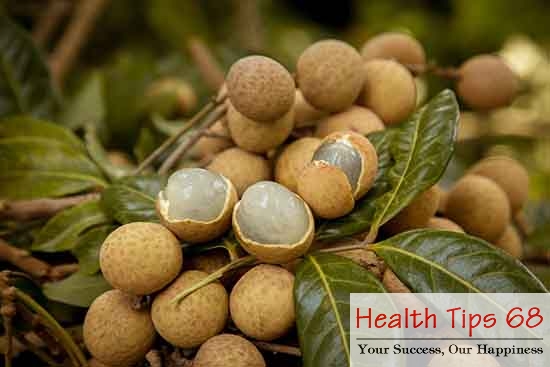
Like the lychee, the longan comes from the soapberry family, although it is not as well known. The shell of the fruit is both firm and thin.
This makes it easy to get the fruit out of the shell simply by cracking the shell apart. The fruit also has the name Dragon’s Eye, because of the way the fruit and its black seed resemble an eye when cut in half.
40. Prickly Pear
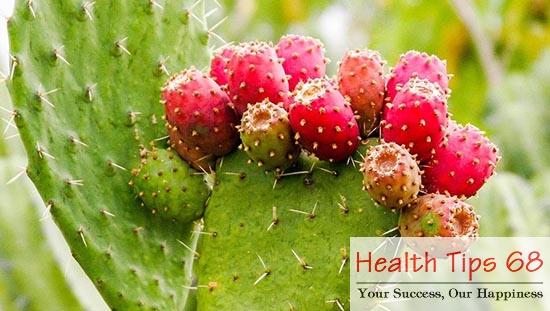
While many people have heard of the prickly pear cactus, few realize that the fruit of the cactus is edible. If you find them in the market, the worst of the hair-like thorns will probably have been removed, but if you find them wild, eating the fruit without hurting your hands can be quite challenging.
While the fruit itself is popular, many people prefer the juice, which can be obtained by liquefying and then straining the flesh of the fruit.
41. Medlar

The best time to eat medlar is when the fruit has become extremely soft. When this happens, the flesh of the fruit feels and tastes like a form of fruit butter (which is more appealing than it sounds).
When it is at that stage, the fruit can be challenging to eat, but one approach is to simply create a hole in the skin and suck out both the seeds and the flesh through that hole.
42. Finger Lime

Australian finger limes are a particularly unusual type of citrus fruit. The fruits have been becoming increasingly popular as a type of gourmet food, and have also been referred to as lime caviar.
The little bulbs within the fruit contain juice that tastes similar to a common lime. These burst when chewed, which makes them an appealing garnish to many dishes.
43. Miracle Fruit

Surprisingly, the name miracle fruit is entirely accurate. This unusual berry is significant because glycoproteins within it bind to the taste buds on the tongue.
The end result of this is that for roughly an hour, any other food you try will be distorted into having a sweet taste. This feature of the fruit can create whole new taste. This effect means that you could eat the fruit and then eat a lemon, and that lemon would taste sweet.
44. Strawberry Tree AKA Arbutus unedo
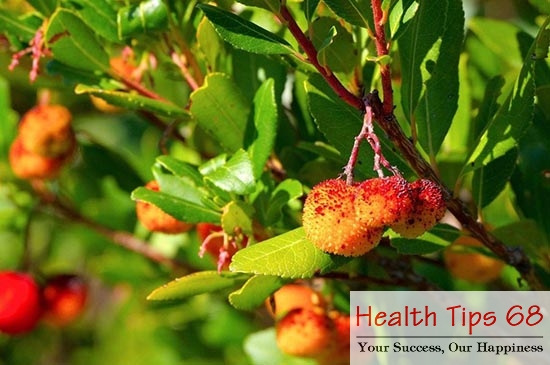
Despite the name, the strawberry tree doesn’t actually produce strawberries (those don’t grow on trees). Instead, they produce a berry that is red when it is ripe.
The fruit can be eaten and has a sweet taste that some consider similar to a fig. In general though, the taste of the fruit is considered unremarkable and it is not widely popular.
45. Star apple

The name star apple can be misleading, because it suggests that you can bit into the fruit much like an apple. In reality, the skin and the rind surrounding the fruit are inedible and should not be eaten.
One of the simplest ways to eat the fruit is to cut it in half and use a spoon to scoop out the fruit pulp. When you do this, the star pattern in the pulp also becomes evident.
46. Salmonberry

Visually, salmonberries look a lot like raspberries. However, their color (not their taste) is often a salmon color. The coloration of the fruits can range though, and you can see fruits anywhere from pink to dark red.
The fruit doesn’t have the sharpness that you find in raspberries, but the taste is still appealing. The orange fruit tend to have the most flavor, while the more red fruits are often disappointing in terms of taste.
47. Pitanga AKA Surinam Cherry

Technically, the Surinam cherry isn’t actually a cherry and the fruit doesn’t even look that much like a cherry. They are also a bit of an acquired taste, especially as they don’t actually taste anything like a cherry.
They should also only be eaten when they are completely ripe. At that time they are a deep red color. Fruits that aren’t as ripe won’t necessarily make you sick, but you will regret trying anything even a little bit less ripe.
48. Safou
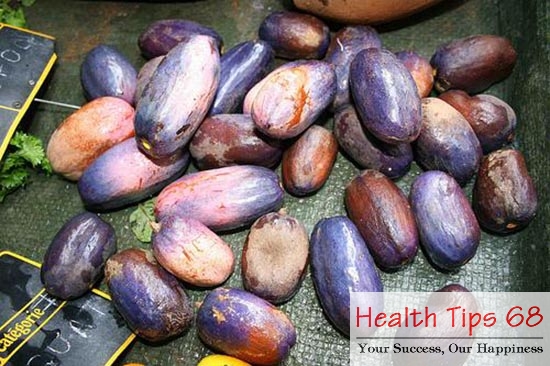
Safou fruit is also known as African pear. Safou, another name butter fruit, is a fruit specific to Africa. The other name is the buttery fruit, which is similar to the butter when this fruit is cooked.
Taste is like butter. It consists of dark blue to purple colors. It is a fruit that can grow to about 14 cm. The fatty acid, amino acid and triglyceride enzymes present in it are capable of satiety. For this reason it is one of the fruits recommended in weight control programs and it can be a key resource in reducing hunger.
49. Duku

Duku is actually a member of the same species as the fruit langsat. However, the two are considered to be different cultivars.
Species that fall under the duku variety tend to have thick bright green leaves with bunches that contain just a few fruit. The fruit themselves tend to be large and round with thick skin.
50. Platonia AKA Bacuri
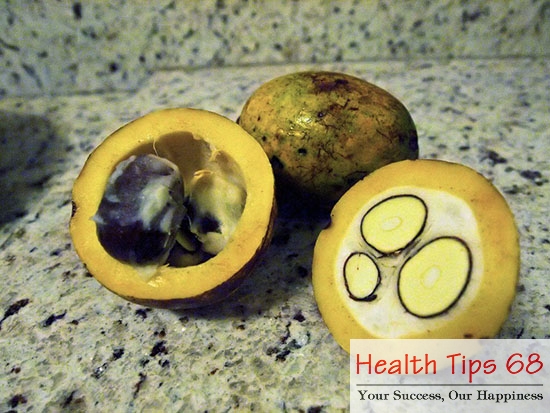
With a mottled yellow-brown outer skin, the bacuri fruit is unlikely to win any beauty contests. Yet, despite this, the flesh of the fruit is surprisingly tasty and achieves a good combination of both sweet and sour.
The fruit is largely eaten fresh, although are a few other uses, such as creating jams and jellies from the fruit.
51. Achiote AKA Bixa orellana

Achiote (Bixa orellana) is a shrub native to a region between northern South America and Mexico. Bixa orellana is grown in many countries worldwide.
The tree is best known as the source of annatto, a natural orange-red condiment (also called achiote or bijol) obtained from the waxy arils that cover its seeds. The ground seeds are widely used in traditional dishes in Central and
52. Ackee
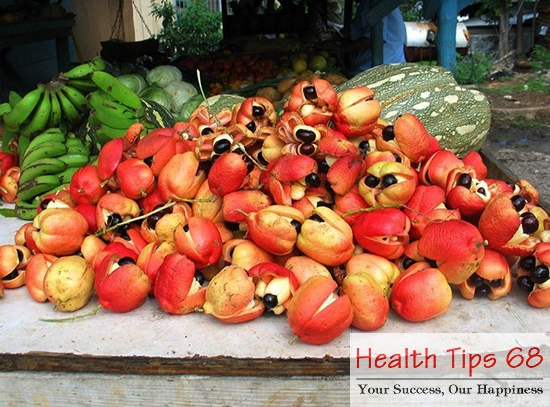
The ackee is another member of the soapberry family, much like the longan and the lychee. It is a tricky fruit to eat, because if it is not eaten properly, the fruit can lead to vomiting, a coma or even death.
The only edible part of the fruit is the yellow flesh that surrounds the seeds. This part can also only be eaten when the fruit has turned red and split open. However, some who have tried the fruit do claim that it is worth the risk.
53. Akebi

Akebi has the appealing nickname of chocolate vine, which tends to get people’s attention relatively quickly, although the fruit certainly doesn’t taste like chocolate.
Instead, the pulp of the fruit is relatively mild and tends to have a very slight coconut flavor. The fruit has a very short fruiting period. This means that it isn’t very widely available and can be difficult to find.
54. Pandanus (from the Screw Pine tree)
p
The screw pine tree is a particularly common type of tree in many Pacific coastal regions. The fruit can be a bit tricky to eat, as you need to remove the individual fruit pieces (called keys).
Often the first key or two needs to be removed with a hammer, but the rest can be removed by hand. This makes for a tricky process, but the fruit itself can still be appealing.
55. Pepino Melon

Despite its appearance and name, pepino melon isn’t actually a melon. Instead, the fruit is related to the nightshade and has a flavor that is a combination of the flavor of honeydew and of cucumber.
The fruit is frequently used raw, such as part of a salad or simply eaten as-is. Many varieties of the melon have yellow instead of purple skin, but still retain the distinctive purple striping.
56. Cupuacu

Cupuacu comes from the same family as cocoa and is commonly used to create a new kind of ‘chocolate’, one that uses cupuacu beans instead of traditional cocoa beans.
This creates a chocolate alternative that is appealing to many, especially people who are trying to move away from cocoa. It is an interesting alternative to chocolate, with a more complex taste that isn’t quite what you expect from standard chocolate.
57. Saguaro
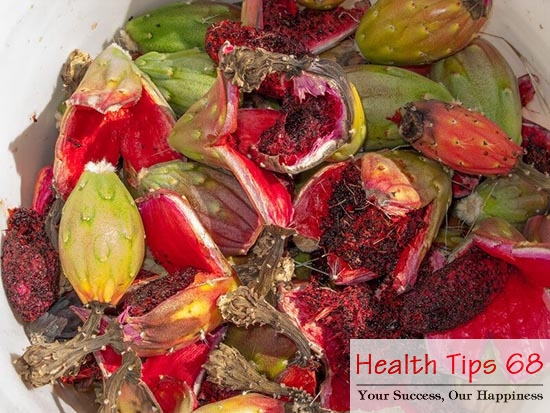
Saguaro is a cactus species that is particularly common in Arizona, although it is also found in other parts of the United States and further afield.
The cactus grows bright red fruit that have to be harvested using a stick because of the spines of the cactus. Most of the time the fruit is used to make a syrup, which is a particularly rare type of syrup.
58. Barrel Cactus

Yikes! That looks dangerous. But those are often the most delicious. Here are some tips for eating and cooking barrel cactus fruit.
59. Honeyberry

Honeyberry plants produce these unusual elongated blue berries that look almost like someone has taken a blueberry and stretched it out. The berries are zesty, with a thin skin, and are easily eaten.
However, there is a lot of debate on what precisely the berries taste like. A range of flavors have been attributed to the fruit, such as cherry, kiwi or blackberry. Despite this, the simplest explanation may simply be that the fruit has its own unique taste.
60. Natal Plum

The natal plum is a particularly delicious fruit, yet the plant is from a highly deadly family, which makes people steer well clear of it.
A key member of that family is oleander, which is often responsible for fatally poisoning people. Additionally, the fruit is the only part of the natal plum plant that is safe to eat – something that does not exactly help the reputation of the fruit.
61. Imbe
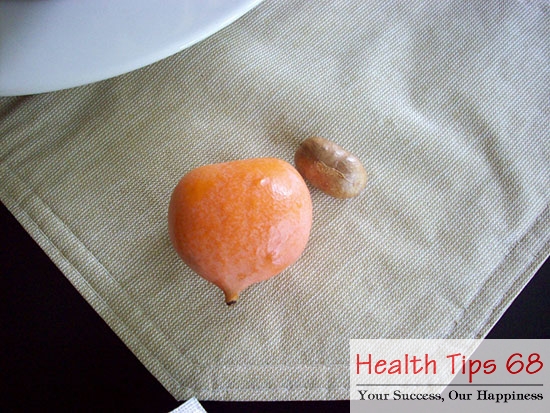
Imbe is a relative of the African mangosteen, although it is not as well-known. The fruit resembles an apricot, with one large seed per fruit, although the amount of edible material per fruit is relatively small. The fruit has a pleasant sweet taste that is similar to apricots.
62. Crowberry

The crowberry isn’t a particularly popular type of berry, but there is growing interest in using it as an edible fruit.
Traditionally, crowberries have been paired with meals like dried fish, sour milk and roe, as the berry is tarter than many other types of berries. It is also best used cooked and the taste tends to be unappealing when the berries are eaten raw.
63. Cloudberry

Cloudberries tend to be a soft and juicy taste. When they are ripe, they have a tart taste that many people find appealing. They are also often eaten when they are overripe.
At that point, they have a more creamy texture and they also taste sweeter. Cloudberries are frequently used to make products like juices, jams and tarts, and also make a fantastic topping for foods like ice cream and pancakes.
________________________________________________________________________________________Đầu tư là gì? Kiến Thức Đầu Tư Chứng Khoán Quan Trọng Nhất Trong Quá Trình Đầu Tư?
Mở tài khoản chứng khoán TechcomBank nhanh chóng, thuận tiện giao dịch, bảo mật tuyệt đối.
Đầu Tư Chứng Khoán Xu Hướng Đầu Tư 2021 Hướng dẫn kiếm tiền từ đầu tư chứng khoán
Khóa Học Đầu Tư Chứng Khoán - Khóa học chứng khoán online (miễn phí) cho người mới bắt



